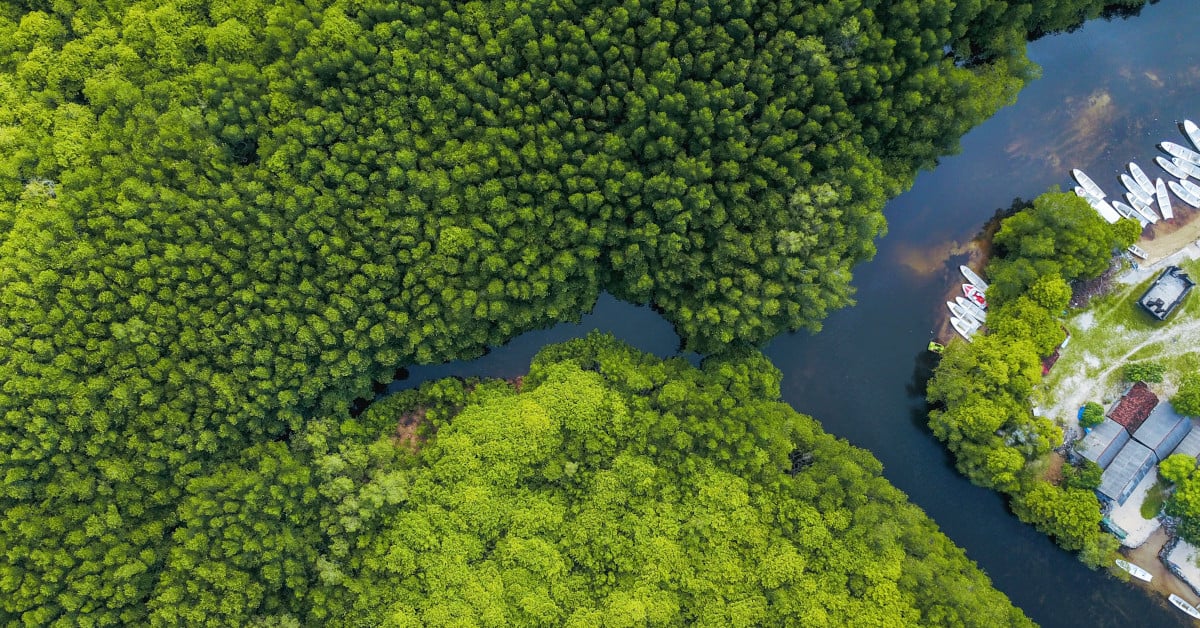Sensitive Species Investigations: A Tale of Two Tortoises
Did you know? What is the difference between a tortoise and a turtle? They are both reptiles protected by a shell; however, a tortoise is land dweller while a turtle inhabits fresh or seawater. This blog post continues FCS’ series investigating the lives and interesting facts about sensitive species, and how humans interact with them. Our investigation in this post focuses on the rugged and elusive desert tortoise, a federally threatened species. The desert tortoise occurs in the Mojave and Sonoran deserts of the southwestern United States and Mexico. For 150 years it was understood that this tortoise was a single species with possible geographic variations. Like many things in the world of science, as knowledge and technology increase so does the ability to accurately classify species based on research and DNA evidence not just empirical data.

By Tommy Molioo
May 2, 2014
 Did you know? What is the difference between a tortoise and a turtle? They are both reptiles protected by a shell; however, a tortoise is land dweller while a turtle inhabits fresh or seawater. This blog post continues FCS’ series investigating the lives and interesting facts about sensitive species, and how humans interact with them. Our investigation in this post focuses on the rugged and elusive desert tortoise, a federally threatened species. The desert tortoise occurs in the Mojave and Sonoran deserts of the southwestern United States and Mexico. For 150 years it was understood that this tortoise was a single species with possible geographic variations. Like many things in the world of science, as knowledge and technology increase so does the ability to accurately classify species based on research and DNA evidence not just empirical data.
Did you know? What is the difference between a tortoise and a turtle? They are both reptiles protected by a shell; however, a tortoise is land dweller while a turtle inhabits fresh or seawater. This blog post continues FCS’ series investigating the lives and interesting facts about sensitive species, and how humans interact with them. Our investigation in this post focuses on the rugged and elusive desert tortoise, a federally threatened species. The desert tortoise occurs in the Mojave and Sonoran deserts of the southwestern United States and Mexico. For 150 years it was understood that this tortoise was a single species with possible geographic variations. Like many things in the world of science, as knowledge and technology increase so does the ability to accurately classify species based on research and DNA evidence not just empirical data.
Natural History
The desert tortoise primarily occurs within desert environments in Southern California, Southern Nevada, Arizona, southwestern Utah, and northwestern Mexico. This species is an herbivore that grows to approximately 8-14 inches long with a brown high-domed shell. It is a diurnal critter that spends a majority of its life inhabiting burrows. In addition, unlike the burrowing owl, the desert tortoise digs their own burrows in the friable sandy desert soils, typically near the base of shrubs such as creosote or under rock outcrops. These tortoises are mostly solitary animals as adults and will breed at 12-20 years of age from April to July. The females will lay either 1 to 2 clutches of eggs consisting of 3-12 eggs, in a nest near or inside the entrance to their burrow. Eggs hatch from September – October, and hatchlings are only 2-3 inches long with soft shells. This early stage of life is very precarious for young tortoises as they are most susceptible to predation due to their small size and soft shells. Anyone that has hiked long enough in the southwestern deserts may have come across an empty tortoise shell, picked clean by a common raven.
Not One, But Two!
Dr. James Cooper taxonomically classified the western species of desert tortoises in 1863 as Xerobates agassizii or the Agassiz Land-Tortoise. Eventually several biologists made general allocation changes to the species’ genus to Gopherus to relate the species closer to the Texas tortoise (Gopherus berlandieri). The scientific name Gopherus agassizii remained in place for over 100 years for the desert tortoise that resides in the southwestern U.S. The largest populations between Southern California and Arizona are separated by the Colorado River and when you look closely, the differences in the species to the west and east of the Colorado River begin to become more noticeable. The following descriptions of each species, coupled with DNA sampling, is what lead researchers to split the tortoises into two distinct species; the Mojave desert tortoise which retained the name Gopherus agassizii, and the Sonoran desert tortoise with the new designation Gopherus morafkai. However, we will learn later on that the split of this species into 2 distinct species has more drastic results than just having to learn a new name.
The Mojave Desert Tortoise
The Mojave Desert tortoise (Gopherus agassizii) occurs west of the Colorado River in the Mojave Desert of California, and inhabits desert valleys dominated by creosote bush scrub, as well as desert scrub habitats on alluvial fans. These tortoises are most active in the spring when winter and early spring rains have helped sprout annual plants and grasses for foraging. It is adept to surviving the summer drought months through p eriods of inactivity in burrows and the ability to store water for a long time that is gathered from eating annual plants. They typically dig a dome shaped burrow at the base of creosote shrubs in friable soil that is easy for digging. Due to their location within the arid southwest, they may be more susceptible to drought loss, tend to mature earlier and have a shorter life span than the Sonoran desert tortoise. Additionally, as a lowland resident, the habitat for Mojave desert tortoise is more suited to development and as a result is threatened by urban development, agriculture and renewable energy. Fragmentation of habitat and conversion of habitat to development is one of the main factors that has caused a decline in this population and subsequently resulted in the Threatened listing status in California (1989) and the U.S. (1990). As such, several agencies such as the United States Fish and Wildlife Service (USFWS), California Department of Fish and Wildlife (CDFW) and the Bureau of Land Management (BLM) have developed guidelines and survey protocols to protect the desert tortoise and its habitat.
eriods of inactivity in burrows and the ability to store water for a long time that is gathered from eating annual plants. They typically dig a dome shaped burrow at the base of creosote shrubs in friable soil that is easy for digging. Due to their location within the arid southwest, they may be more susceptible to drought loss, tend to mature earlier and have a shorter life span than the Sonoran desert tortoise. Additionally, as a lowland resident, the habitat for Mojave desert tortoise is more suited to development and as a result is threatened by urban development, agriculture and renewable energy. Fragmentation of habitat and conversion of habitat to development is one of the main factors that has caused a decline in this population and subsequently resulted in the Threatened listing status in California (1989) and the U.S. (1990). As such, several agencies such as the United States Fish and Wildlife Service (USFWS), California Department of Fish and Wildlife (CDFW) and the Bureau of Land Management (BLM) have developed guidelines and survey protocols to protect the desert tortoise and its habitat.
Sonoran Desert Tortoise
In contrast to the Mojave Desert tortoise, the SSonoran desert tortoise (Gopherus morafkai) lives on the rocky slopes and bajadas in the Arizona uplands and northwestern Mexico, east of the Colorado  River. They dig burrows under shrubs and rocks, but may also substantially expand existing crevices under rocks. Sonoran deserts are more active in the summer months than Mojave Desert tortoises due to the monsoon rains that bring fresh plants to forage. The Sonoran tortoises also have larger territories with greater population sizes. The greatest population threats to this species are from road development and urban development, although less than the Mojave tortoise. This species is a proposed Candidate for listing by the USFWS.
River. They dig burrows under shrubs and rocks, but may also substantially expand existing crevices under rocks. Sonoran deserts are more active in the summer months than Mojave Desert tortoises due to the monsoon rains that bring fresh plants to forage. The Sonoran tortoises also have larger territories with greater population sizes. The greatest population threats to this species are from road development and urban development, although less than the Mojave tortoise. This species is a proposed Candidate for listing by the USFWS.
What This Means for the Tortoise…
The split of the two species has created a significantly smaller population for Gopherus agassizii due to the loss of population numbers from Gopherus morafkai. As such, many biologists believe the status for G. agassizii may be elevated to Endangered.
What This Means for Humans…
First off, if you ever come across a desert tortoise in the wild, in either California or Arizona, don’t touch it! Desert tortoise store water in their bladder for months and can empty their bladder when they feel threatened. Additionally, humans have been known to spread a respiratory disease to these tortoises when handling them. If you are developing a property and you feel you may have habitat for desert tortoises, or have seen tortoises (or an agency mandates you to look for them) call an FCS biologist for a consultation to conduct focused surveys to determine the presence/absence of this species.
For more information on sensitive species, download our free Species Calendar, which provides survey protocol guidelines for some of the most common focused surveys in Southern California, to help you stay ahead of survey season. And for more information on how these solutions can be possible, simply click on the link below to speak to one of our experts.
Related Articles
Environmental Impacts, Natural Resources Management
By Adrienne Garcia on March 10, 2020
Environmental Impacts | Sustainability | Forests | Organization
By Kevin Bolland on December 23, 2019
Environmental Impacts | Environmental Assessments | CEQA | Environmental Planning | city planning
By Megan Crawford on November 19, 2019
Natural Resources Management | FCS | Forests
Be a sustainability leader.
Our team supports you no matter where you are on your Sustainability Journey. Talk to us today to learn more.





